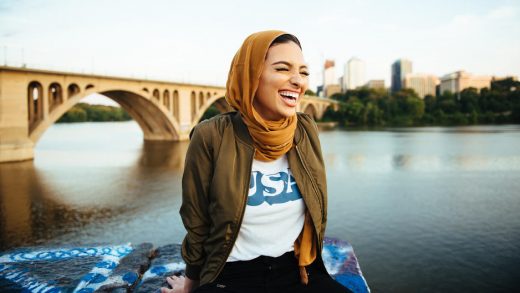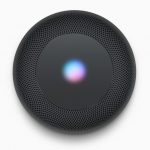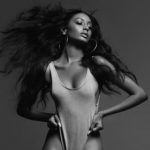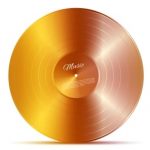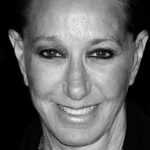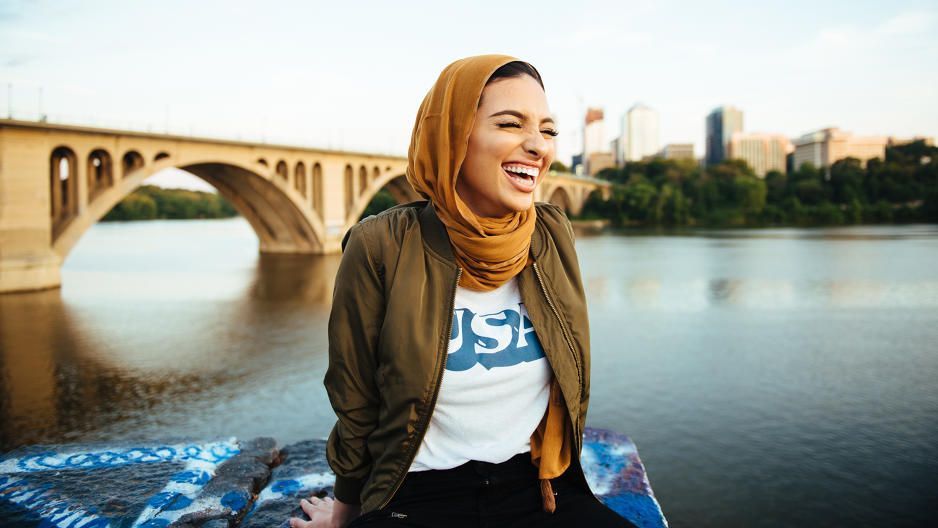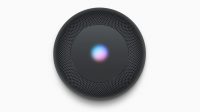Hijab In High Places: Muslim Women Leaders Explain The Challenges Of Visibility
Noor Tagouri knew she wanted to be on television since she was 8 years old, but a career as a newscaster seemed incompatible with her hijab, or head scarf. “How can you do that on TV?” said the naysaying voice in her head. She assumed that, when she was old enough to make her own choices, her hijab would go out the window.
Instead, fresh out of college, Tagouri became a local TV news reporter in the Maryland/D.C. area, head scarf and all. At age 22, she now anchors and produces stories around the world for Newsy—and is on the way to achieving her dream of becoming the first hijabi anchor on U.S. television.
The Economy Depends On Different Perspectives
American Muslim women who wear hijab are one minority whose ideas are rarely heard. Though often invoked symbolically as the face of their religion (a 2011 survey from Pew Research reported that about six out of 10 American Muslim women are hijabi, of about 3.3 million Muslims in total now), they are seldom seen in positions of leadership. But when they do break the glass ceiling—battle-tested by the constant struggle against stereotypes and the pressure to fit into norms—hijabi women exhibit some of the qualities most essential to success: fearless drive, creative thinking, empathy, and the ability to not to sweat the small stuff.
Yet women like Tagouri and minorities are often underrepresented in key creative or decision-making roles. According to a 2016 report from the Women’s Media Center, for example, less than two-thirds of news organizations had at least one woman among their top three editors, and only 15% had at least one person of color among the top three. Newsrooms are similarly homogenous. In 2014, women of color made up only 6% of staff (both print and online), compared to 56% white men and 32% white women.
This despite the fact that we know that different perspectives impact the bottom line.
A 2015 report from McKinsey & Company found that leadership teams with a range of problem-solving approaches, perspectives, and ideas make better decisions and are more innovative. And diversity correlates with better performance: McKinsey’s survey of 366 companies showed that gender, racial, and ethnic diversity tracked with bigger financial returns—15% and 35% above the national average, respectively.
Female hires are increasing, the chair of the American Society of News Editor’s Diversity Committee reports, but more needs to be done to achieve full representation.

Wearing A Veil Offers No Place To Hide
For Tagouri, finding the confidence to put her hijab-clad self in front of the camera—without regard for what others might say or think—required wrestling with her identity “as a woman, as a feminist, as a Muslim,” she says. The paradox of wearing the veil in the U.S. is that there’s nowhere to hide; it takes courage to stand out. This hard-fought process of reclaiming her difference and learning to wear it with pride has made Tagouri “fearless and unapologetic.”
“It helped me find my own voice and power,” she says. “I don’t need to conform to what anyone deems beautiful, perfect, or worthy enough.” In a field where appearances matter and the best-known anchors have a predictable coiffure and look, Tagouri’s hijab serves as a reminder to herself that she has more to offer. “It’s a symbol of my growth, of how far I’ve come,” she says. “It empowers me to carry myself a certain way and make more of an effort to be a leader.” As an artifact of her personal strength, she says it prompts her to speak up for her ideas and work hard to bring something unique to the table.
Challenging Assumptions
Other hijabis agree. Wardah Khalid, a foreign policy analyst regularly consulted on Middle East issues by members of the government and media outlets, says, “Putting myself out there as a result of wearing the hijab has definitely made me more confident in who I am. Like it or not, when I put it on, I represent a lot of different things. The best thing to do is to own that.”
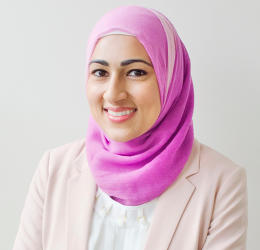
The onus of representing a whole community to Main Street and Capitol Hill alike motivates Khalid to excel. She has challenged Texas Senator Ted Cruz on his stance on “radical Islamic terrorism,” consulted for the U.N. on lone wolf terrorism, and explained geopolitical issues in numerous columns and TV appearances.
Even negative feedback like hateful comments on a blog post make her more determined. She works hard to define her own narrative before anyone else can. “Walking into the halls of Congress, it’s very white-male dominated. I definitely felt that I stood out,” she says. But that feeling evaporates as she takes charge. “Once I open my mouth, show that I’m competent, and know what I’m talking about,” she explains, “any issues I might have go away.”

Creativity Out Of Conflict
Layla Shaikley’s resume is full of accomplishments. The L.A.-born alum of MIT’s School of Architecture and Planning is a tech entrepreneur, winner of a prestigious NASA internship, coproducer of the viral video “Muslim Hipsters: #mipsterz,” cofounder of TedxBaghdad, and cofounder of software startup Wise Systems. Her ability to innovate is, according to Shaikley, inseparable from her experiences as a “visibly Muslim woman.”
Shaikley explains that her creativity and communication skills are a result of “all the explaining and learning how to pitch and sell myself” she did as a teenager growing up after 9/11. She resented the “false narratives” and Islamophobic stereotypes that proliferated. “My identity and beliefs as a Muslim woman are far from that,” she says. “I am adventurous, stylish. I love travel, I love science, and I am an independent thinker.” Despite Shaikley’s many facets, “ultimately, as a Muslim-American, I had to live in and constantly fight against an identity that I was completely unaffiliated with.”
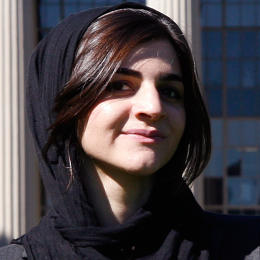
She turned to fashion and style as “a tangible form of expressing my mixed identity.” This attentiveness to “design as messaging” is a hallmark of her work, whether she is designing software, social housing strategies, architectural plans for a Baghdad War Archive, or styling a video. “What else can I add to represent the things that I care about, or believe in, or both?” she asks herself.
“If any woman chooses to wear the hijab, she’s definitely expressing her independent thinking and her ability to make decisions for herself,” Shaikley says. Bold moves are par for the course. “There are parallels between being really super creative and facing these kinds of constructs,” she contends. “Any kind of conflict or challenge usually makes me a better designer.”
Strength In Vulnerability
Tagouri says that the hardest part of being a reporter is getting people to trust you. As an American hijabi, she understands the wariness. “I have an empathy for communities that have been misrepresented because I know what that’s like,” she says. For an investigative report on an abandoned housing facility for the mentally disabled in the D.C. area, former staff and residents were initially reluctant to open up to her. Sharing her own struggles helped win them over.
“It took time to gain their trust,” she says. “People with disabilities in the black communities don’t always have their narratives communicated in the best of light.” Repeat visits to someone’s house, or hours spent on the phone in frank personal conversations resulted in a show of compassion and commitment to honoring that person’s story. An iconic New York City graffiti artist who is notoriously press shy recently agreed to grant Tagouri a live interview after speaking to her off the record for two hours. Finally, he told Tagouri, “I know what reporters are like. They just take the story and run with it. But I know you’re not going to do that.”
Caring about “getting the cultural nuances right” and “sharing in the vulnerability” of those she talks to matters because she’s experienced the stigma that results when mainstream narratives get it wrong.
Picking Battles And Channels
Shaikley, Khalid, and Tagouri all say they’ve been fortunate to be surrounded by supportive peers and mentors. At the same time, in the wider professional world, occasional comments or questions can demoralize them. But it’s not always worth it to engage.
“Honestly, that’s energy, that’s human capital being expended on beating a dead horse, rather than being channeled into other activities,” Shaikley says. “Other peers may be doing something to better themselves, to strengthen their futures or their minds; you’re sitting there fighting about what you’re not.”
Khalid describes receiving two mildly offensive comments about her appearance at an Iran policy meeting. But she felt both came from a place of ignorance. “For something that is so little, I’m not going to ruin a relationship by calling them out,” Khalid says. “I knew it didn’t come from a bad place.”
All three women boast creative side projects that educate and challenge assumptions about Muslim identity so that other aspiring young Muslims like themselves don’t have to. Shaikley’s Mipsterz video celebrates the daily lives of a group of Muslim women in hijab, eschewing “burqas, bombs, or other symbols ignorantly associated with the hijab on our heads” for “skateboards, sunshine, and good times.” Tagouri tours as a motivational speaker for girls and, this October, became the first hijabi woman to appear, fully clothed, in Playboy for their “Renegades” issue. Trojan horse-like, she used Playboy’s platform to offer a vibrant, humanizing portrait of a millennial Muslim woman that shatters stereotypes. After deciding to wear the hijab post-college, Khalid began the Houston Chronicle’s Young American Muslim column to give her “old coworkers and classmates and neighbors who probably didn’t understand the hijab a glimpse of my life as hijabi woman.”
Each believes that embracing the hijab has helped them focus on what matters to them most. As Shaikley says, “There are a lot of feminist undertones with the decision to veil parts of yourself in order to make other parts of yourself shine.”
Fast Company , Read Full Story
(46)

